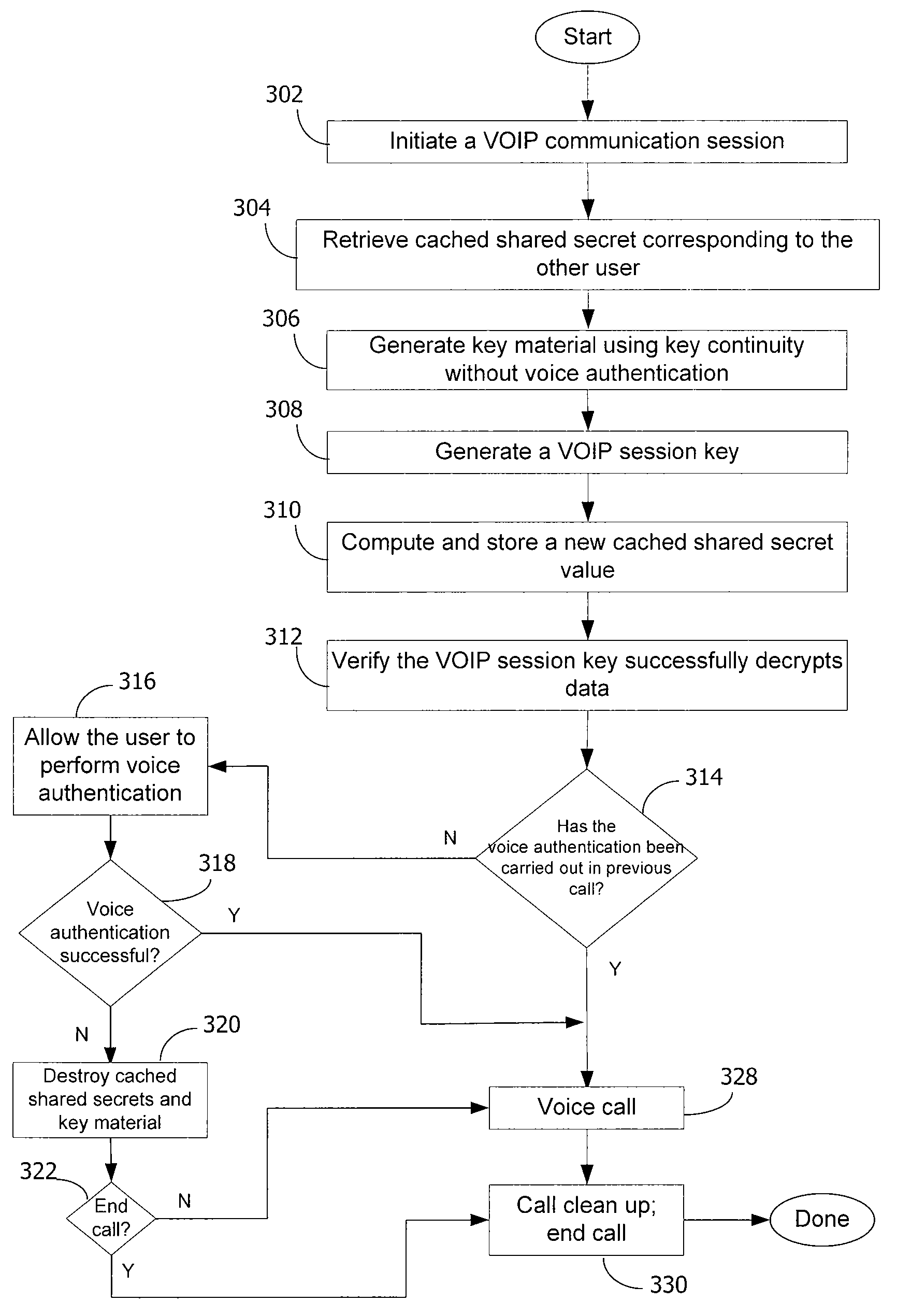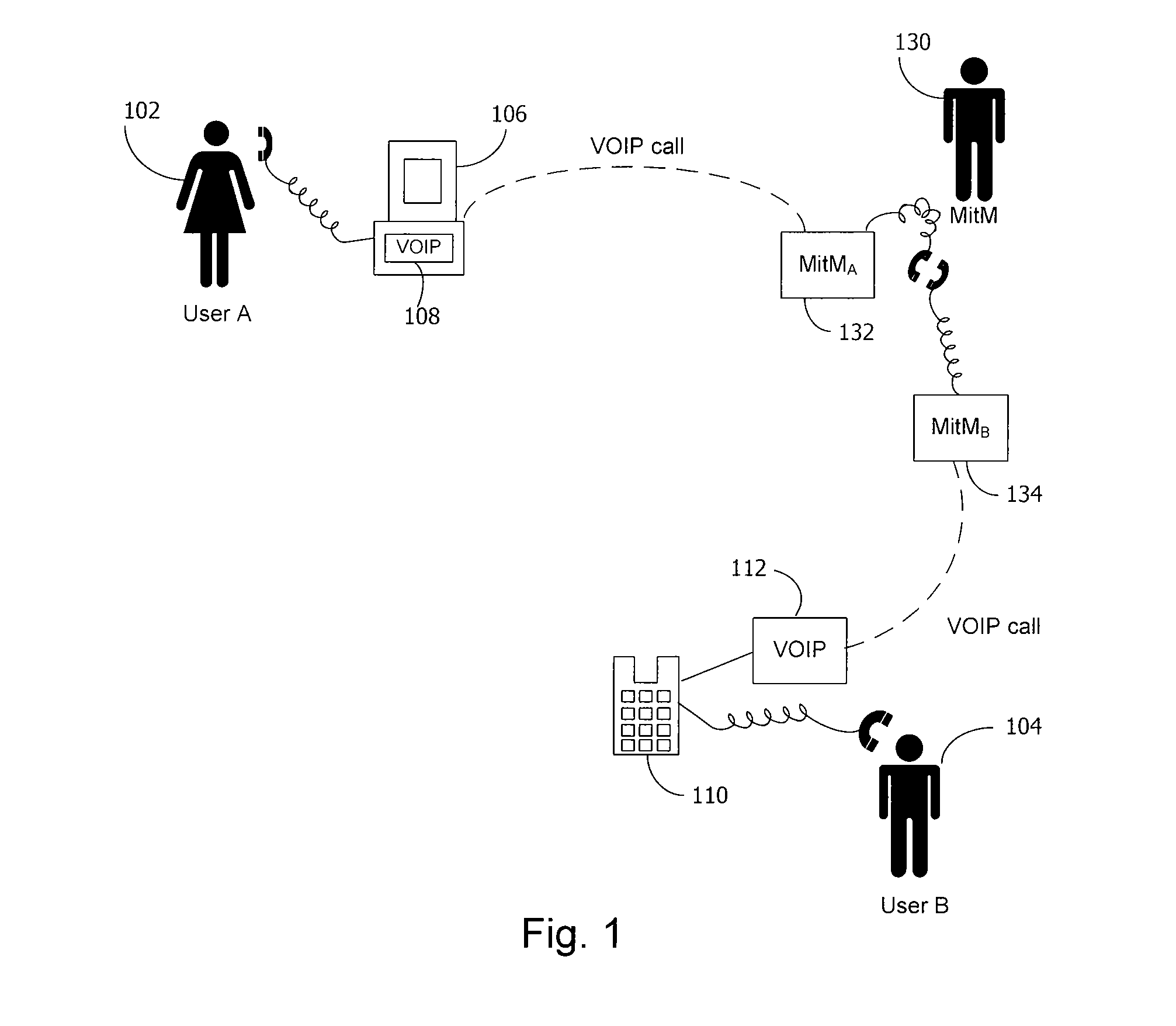Method and system for key management in voice over internet protocol
a key management and voice over internet protocol technology, applied in the field of voice communications security, can solve the problems of inattentive users, significant technology commitments, time requirements and budget commitments, and the most recent implementation of voip not being optimally secured
- Summary
- Abstract
- Description
- Claims
- Application Information
AI Technical Summary
Benefits of technology
Problems solved by technology
Method used
Image
Examples
Embodiment Construction
[0017]A shared secret is any information that two or more parties know but other parties do not know. As long as only authorized parties know the shared secret value, that value can be used as a way of initializing a communication session between any combination of those parties. The secure telephone protocol described herein (an embodiment of which we denote ZRTP) allows a persistent shared secret value to be used to authenticate VOIP calls between users. ZRTP provides cryptographic features lacking in other approaches to VOIP encryption. Although ZRTP uses a public key algorithm, it does not rely on a public key infrastructure (PKI). In an embodiment, ZRTP does not use persistent public keys at all. Instead, ephemeral Diffie-Hellman (“DH”) with hash commitment can be utilized. ZRTP allows the detection of man-in-the-middle (MiTM) attacks by displaying a short authentication string for the users to read and compare over the phone.
[0018]A session key is a cryptographic key used for ...
PUM
 Login to View More
Login to View More Abstract
Description
Claims
Application Information
 Login to View More
Login to View More - R&D
- Intellectual Property
- Life Sciences
- Materials
- Tech Scout
- Unparalleled Data Quality
- Higher Quality Content
- 60% Fewer Hallucinations
Browse by: Latest US Patents, China's latest patents, Technical Efficacy Thesaurus, Application Domain, Technology Topic, Popular Technical Reports.
© 2025 PatSnap. All rights reserved.Legal|Privacy policy|Modern Slavery Act Transparency Statement|Sitemap|About US| Contact US: help@patsnap.com



